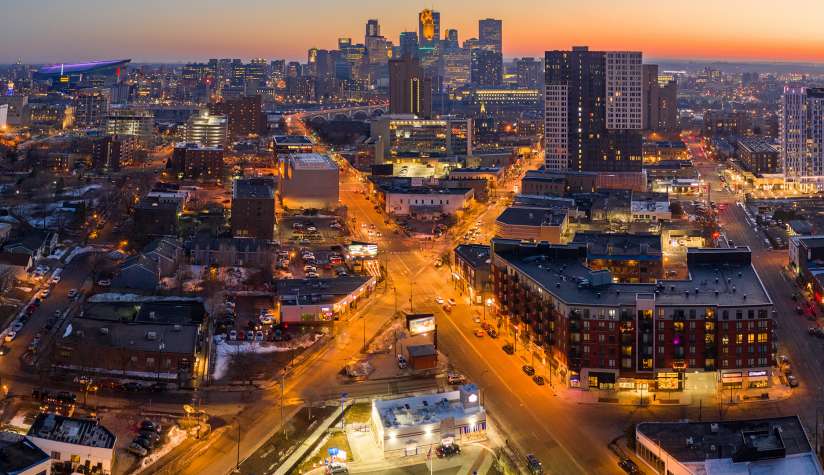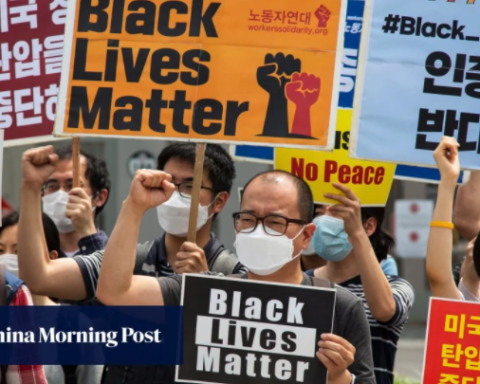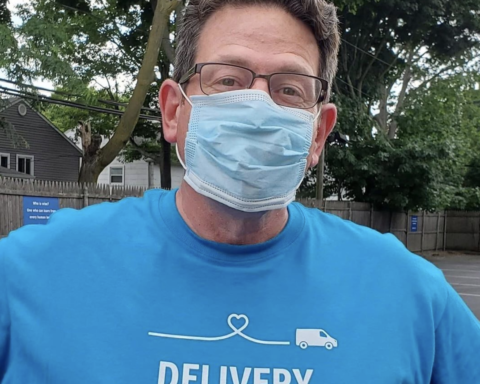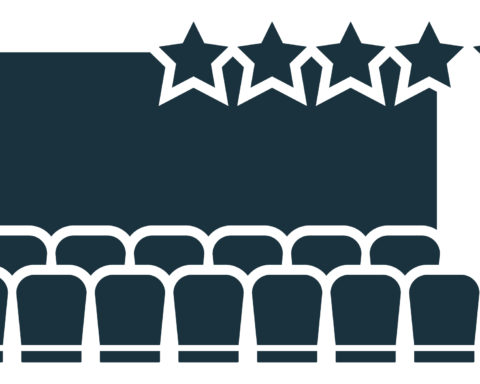MINNEAPOLIS—A community at war with those meant to protect and serve, I thought as I drove down Lake Street on my sixteenth birthday, May 26. Breathing in acrid breaths of smoke, this was not the present I had expected, watching businesses I grew up visiting, and the stores and restaurants I had been at pre-pandemic with my friends, now in flames. We all knew Minneapolis would never be the same. It’s a well discussed fact that the Minneapolis Police Department is racist. Our weekly, if not more, conversation around fears of cops and uncalled for microaggressions is one I’ve become so used to with my POC friends. After George Floyd’s death there truly was a silence before the storm, we all held our breath watching the horrific video tape of Derek Chauvin, Tou Thao, Alexander Kueng, and Thomas Lane holding down George Floyd, Chauvin with his knee to his neck while George pleaded those infamous words “I can’t breath.” The video, while nothing close to an anomaly, was not only caught on camera, but was so vicious, and indisputably an abuse of power, forced people to listen. While people still tried to write it off as a “POC resistance issue” there was little for people to justify those fatal 7 minutes and 46 seconds.
The memorial at Cup Foods went up quickly, my friend Kila Young, who lives just five blocks away recollected, “I went the next day, there were the flowers by Cup, and writing inside the bus stop, and they had the mural of him on the side of the store.” Protesters came chanting “No justice, no peace! Prosecute the police!” and “Lock them up.” Public speakers and community members gathered and spoke to crowds filling the whole block all the way across into the gas station. Chalk art, flowers and signs littered the ground all the way down the block to the Calvary Lutheran Church, whose amazing work helping not only those community members involved in the church, but those who were not. Calvary had a Station 4 making signs at the protests, as well as a large food drive for those in need. Not long after restaurants and neighbors brought out barbecues, and the memorial could be smelt and heard from blocks away.
George Floyd’s murder prompted a universal discussion, a trend began, called blackout, where everyone on Instagram posted a black screen in solidarity with the black lives that have been lost at the hands of police. At first it seemed this was a unanimous feeling of disapproval and disgust towards this vicious murder, and new found hope for change with increased non-minoity activism. Unfortunately as time went on, more and more people began to show their true colors, many who had posted a black screen went, once again, silent on BLM issues. Racists who had before lived in anonymity, came out adorned in Maga merch and hate speech filled Snapchat posts. “It’s not the police’s job to murder people,” Kila remarked during our interview, it seemed there was an abundance of ignorant white people who could not get that through their heads, and even more horrifying, as the days went on, more and more screenshots and videos of white kids, throwing around the ‘n’ word, along with many other slurs and racist “jokes” arrose. It was clearly not only Minneapolis, but even more so Minnesota needed to do better. Privileged people continued to disregard their privilege, and make excuses for racist actions, completely ignoring the deeper systemic issues.
The Calvary Lutheran Church also provides another resource to help people check their privilege. The Intercultural development inventory(IDI) Is used to assess their congregation’s intercultural competence, and has allowed the church to get a more realistic view of where they are on the spectrum of privilege awareness. Psychologists explain many white people’s difficulty to accept their privilege or even deny the existence of racial Injustice as largely having to do with the desire to feel like a good, moral person. This helps to explain the blackout trend, and why instead of sparking increased activism and awareness, it instead was used as a hall pass to appear “socially acceptable” to other non POCs.
These racial issues, that are so ingrained into our society and into the systems that our society is built on can only be fixed when white people stop seeing it as a black issue to sympathize with, and start seeing it as a white issue to fix.








It was quite eye-opening for me to read this piece. The journalist, someone who lives in Minneapolis and has first-hand knowledge of the city, made me see through her eyes. Very thought-provoking.